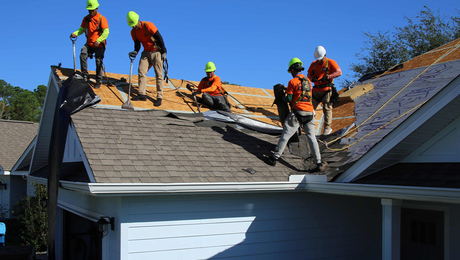Discussion Forum
Discussion Forum
Up Next
Video Shorts
Featured Story

Listeners write in about haunted pipes and building-science tomes, and they ask questions about roof venting and roof leaks.
Featured Video
SawStop's Portable Tablesaw is Bigger and Better Than BeforeHighlights
"I have learned so much thanks to the searchable articles on the FHB website. I can confidently say that I expect to be a life-long subscriber." - M.K.



















Replies
First one - on either side, 2+1 usually; never the edge, and never against my shoe!
001 - thru the header
002 - corner of the stud
003 - not sure I understand the question - toenail both sides
Forrest - laying flooring today
Thanks for your input. The last picture was intended to portray toenailing either through the edges or the sides. I take take it by your reply "toenail both sides," that you prefer the sides.
What though, is the reason you say "never the edge."-T
Kicking the stud left or right a bit doesn't mess up the DW or sheathing plane - bonking it off the edge of the plate might.
Forrest
first one - Why? it is already end nailed apparantly I was a wise guy in school tooI really look at grain and where it is likely to split and twist and deal with all that, but generally on side of stud two on one side and one the otherSecond example depends which is high or low - you can draw wood pieces flush with a toenail, biut genreally prefer the stud in this example.Third one - for just fire blocking I alternate so I do not need to toenail. I can end nail them easier. For blocking for finish backing, I will generally nail the block edge.
both this and the header example - cutting the grain by nailing the header or the stud is too likely to take a shave off the orner of the lumber.Last one - I have no idea what you are trying to show.
Welcome to the Taunton University of Knowledge FHB Campus at Breaktime. where ... Excellence is its own reward!
0: Side.
1: 1 8d on both sides of the cripple. Do the other side after standing.
2: Slightly angled face nail from underneath the next block.
3: HAHAHA. trick question. Ya kants nail what ain'ts there.
0) I try to avoid bumps under the DW. I would start with a 16d blocking nail on the left side in the middle of the plate, then drive 2 toenails about an inch in from both sides on the RH side of the stud.
1) I always carry a hammer and a few 8d's.
2) Why toenail if you don't have to.
SamT
Praise the Corporation, for the Corporations' highest concern is the well being of the public.
If you are toenailing and you want the toenail to actually hold the wood in place, you always toenail through the side, not the edge.
The reason for this is that a toe nail through the side locks the stud in place. It can still be pushed sideways along the length of the plate but it can no longer be moved in and out. If you nail on the edge, you will still be able to move it in both directions. The edge nail will hold it in place until a side nail is placed but that is all.
If all you want is for fireblocking not to fall out until the inspection is over, it probably does not make any difference.